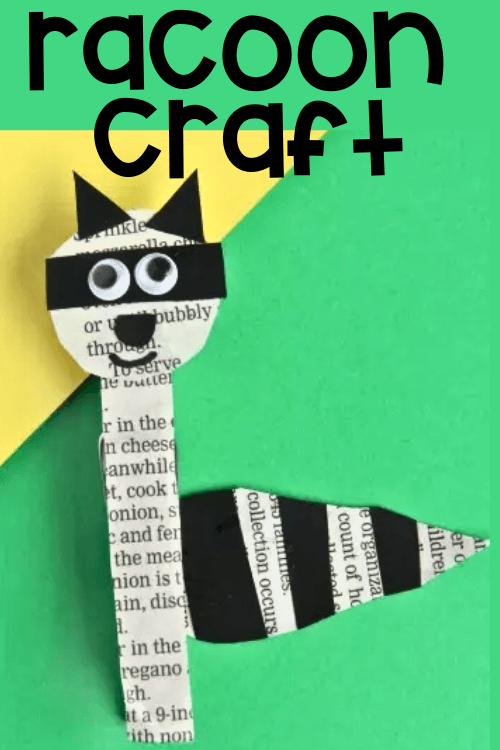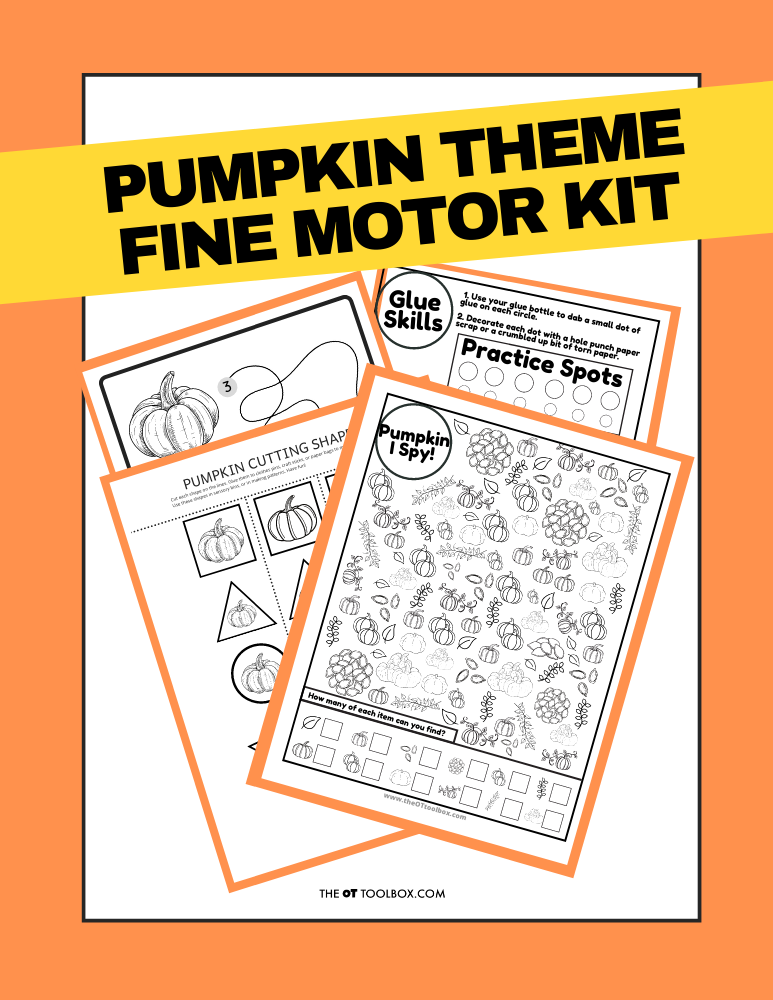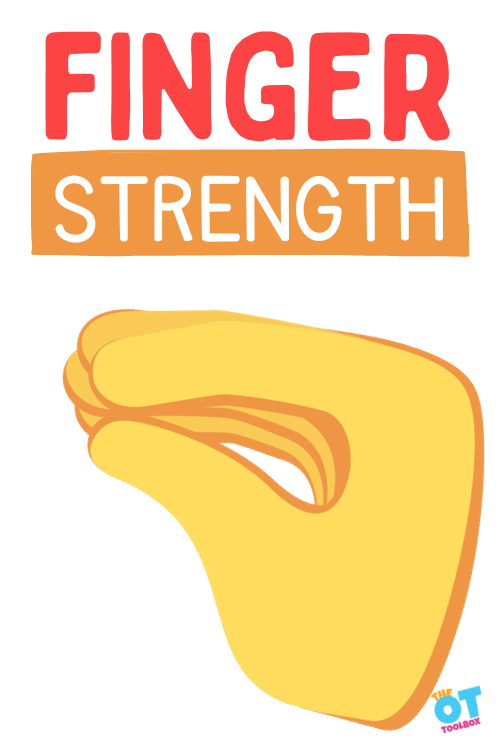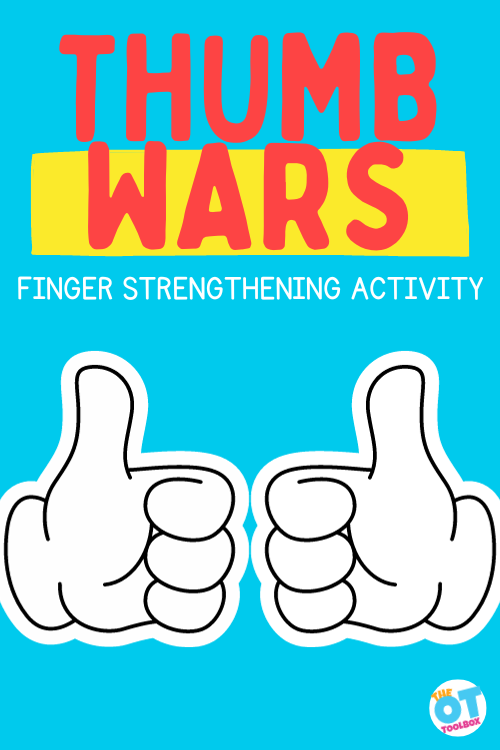This Pumpkin Deep Breathing Exercise is the very first visual breathing tool that we created here on the website. We now have many more deep breathing exercises designed to support self-regulation, mindfulness, and brain break needs. We’ve recently updated this Halloween mindfulness activity to include more information on WHY this pumpkin deep breathing strategy works. We’ve also updated the printable to include a pumpkin breathing poster and a pumpkin mindfulness coloring page! This printable deep breathing exercise is a great Halloween Mindfulness mindfulness activity.
You can get both below or access them in our Member’s Club.
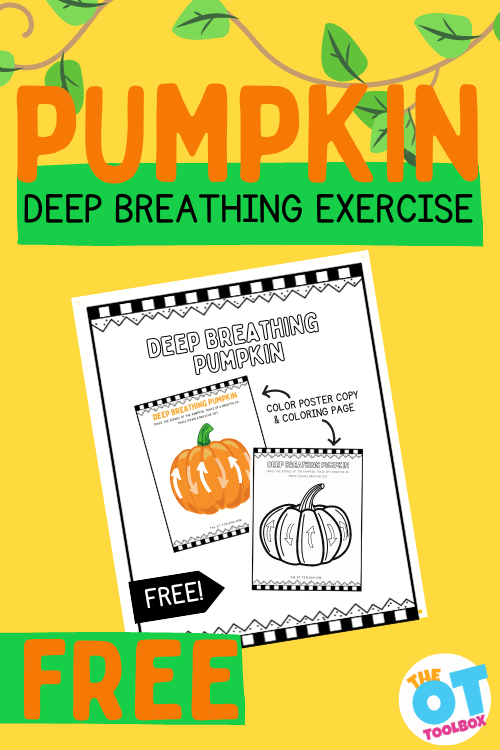
Pumpkin Deep Breathing Exercise
This Halloween activity is one that I came up with while thinking about our recent Halloween Occupational Therapy activities post. So often, we see kids who struggle with coping strategies and require tools to improve self regulation.
This can occur at school or at home. What if we could combine a child’s interest in all things Halloween with a deep breathing exercise that can be used as a coping strategy, or a calm down activity?
That’s where this pumpkin deep breathing exercise comes in.
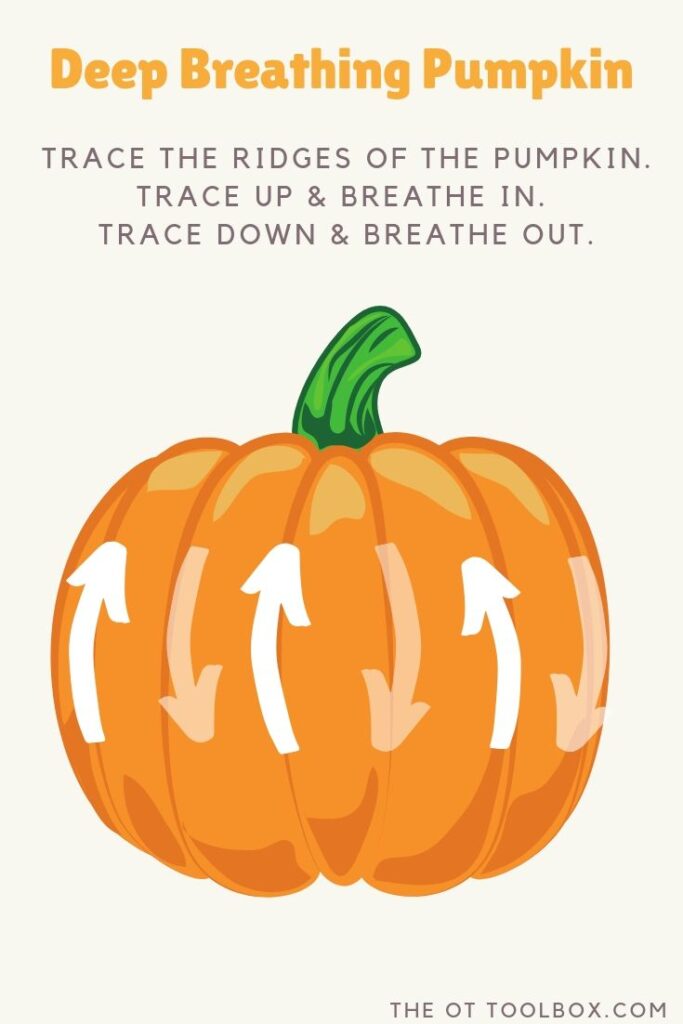
Halloween Mindfulness Activity
We’ve created many breathing exercises to calm down kids (and adults) here on the website, and this pumpkin themed mindfulness strategy is just one of the tools in the toolbox.
So often, parents and teachers ask for strategies to use as a coping mechanism. When kids have coping tools in their toolbox for addressing sensory needs, worries, and getting to that “just right” state of regulation, a self-reflective state can occur.
Addressing specific needs like sensory overload, worries or anxiety, fears, or nervousness can be as simple as having a set of sensory coping strategies on hand. One way to do this is using mindfulness and positive coping skills like this deep breathing exercises.
Using deep breathing exercises to support mindfulness and coping skills works for several reasons:
- When kids are taught about how their body feels and reacts in certain situations, they can self-reflect on past responses.
- They can better understand who they are and how their body reacts to stressful or sensory situations.
- By better understanding their states of regulation, they can be mindful of things that may set them off, but better yet, know how to respond.
- Having a coping strategy on hand can set them up for success in learning or social situations.
Practicing mindfulness activities and coping strategies can be powerful for kids!
Mindfulness is the ability and awareness of thoughts, feelings, and sensations as our body responds or reacts in thought, feeling, and sensations. Mindfulness is being present in the moment in any given situation with full awareness of inward and outward sensations. Practicing mindful awareness through deep breathing exercises is one way to notice how our body is reacting in a given moment and provides a tool to reset. Coping skills for kids may include deep breathing as just one strategy.
Here are some mindfulness videos on YouTube to help kids better understand what coping strategies and mindfulness in action looks and feels like.
Deep breathing acts as a coping tactic and a calming activity. It’s an easy coping strategy for kids because taking deep breaths with mindful breathing can be done anywhere and without any equipment.
Taking controlled breaths with deep breathing can give kids a sense of control that helps them rest and address self-regulation or emotional regulation when they are upset, worried, or feel a need to calm down.
Halloween Breathing Exercise
So now that we’ve covered deep breathing and why it’s a helpful coping strategy for kids, let’s talk about a fun Halloween themed coping strategy that kids will love to try.
The deep breathing printable activity uses a simple picture of a pumpkin, but you can use a real pumpkin, too.
Use a real pumpkin for more sensory benefits.
The small decorative gourds or pie pumpkins are perfect for this activity, because kids can hold the small pumpkin in their hands and feel the weight of the pumpkin as they complete the breathing strategy.
- Hold a small pumpkin in the palm of your hand.
- Use your pointer finger of your other hand to slowly trace up a ridge and breathe in.
- Then trace down another ridge and breathe out.
- Continue tracing the ridges of the pumpkin while deeply breathing in and out.
Take the breathing exercise a step further by trace the lines up toward the stem while taking a deep breath in. Hold the breath for a few seconds and then trace a line down another section of the pumpkin while slowly breathing out. Hold that breath for a few seconds. Repeat this process as you slowly trace up and down the sections of the pumpkin.
What’s happening with this pumpkin breathing exercise?
Several sensory systems are at work here when using a real pumpkin in this Halloween mindfulness strategy:
Heavy Work- The weight of the pumpkin on the arches of the palm of the hand= PROPRIOCEPTIVE sensory system.
Calming Tactile Cues- Engaging the tactile sensory system to trace the ridges of a smooth surface. Think about how some individuals like rubbing specific textures like a silky blanket or the calming strips of a fidget tool. Running a finger along the groove of a smooth pumpkin surface engages that calming tactile input.
Belly Breathing- Deep breaths combined with a visual focus offers proprioceptive input through the lungs and diaphragm. Engage belly breathing by taking in fully breaths to fully engage the lungs. Then hold the breath for a second or two before releasing the breath. When belly breathing is engaged, the lungs continue to expand for a moment and add further pressure throughout the ribcage and internal organs. This breath control evokes the interoceptive system.
Bilateral Coordination- When holding the pumpkin and tracing with a finger on the other hand, both sides of the body are at work in a coordinated manner, otherwise known as bilateral coordination. Holding the pumpkin with one hand and tracing with the other hand engages bilateral use of both sides of the body.
Whether you are using a pumpkin picture or real pumpkin, show kids how to use deep breathing as a coping tool by taking calming breaths while they trace the lines of the pumpkin.
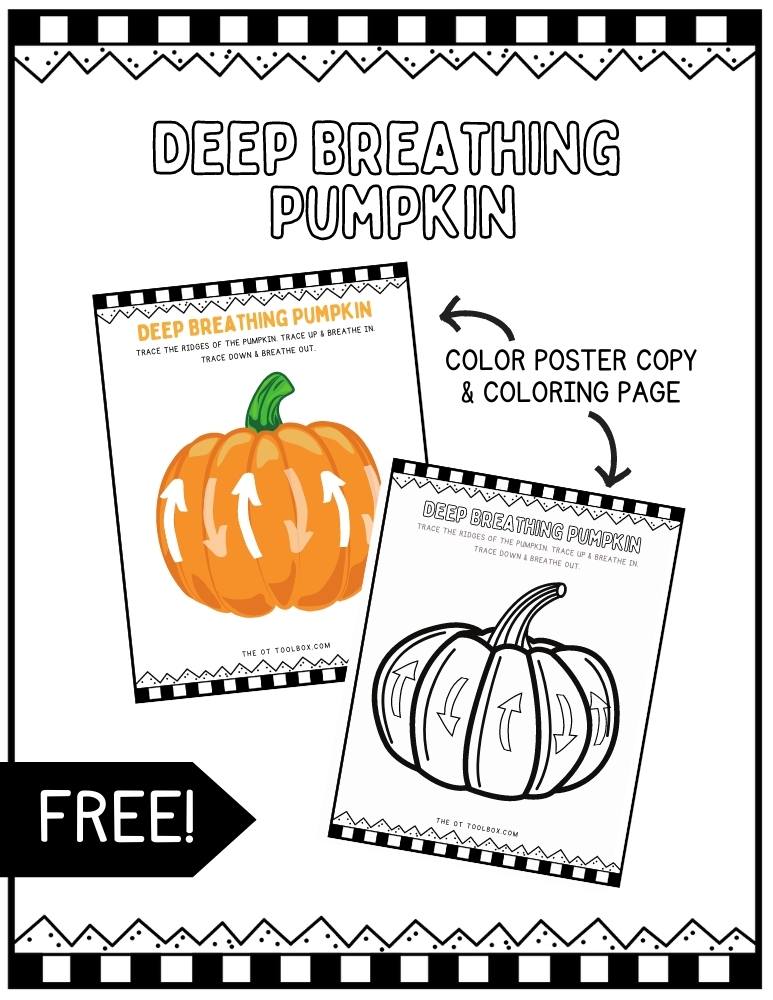
Halloween Deep Breathing Poster
In this newest update to our calming breathing exercise, we created both a pumpkin deep breathing poster and a coloring page.
- The poster can be printed out and hung in a classroom, therapy clinic or home.
2. Use the deep breathing exercise as a brain break during the month of October.
3. It’s a great tool for using during Halloween parties as a therapist- approved activity that supports underlying needs, too.
4. Many times, children can become overstimulated during classroom Halloween parties, and the days leading up to Halloween. Use the pumpkin deep breathing visual as a tool for the whole classroom to organize their sensory systems and focus on the learning that still needs to happen.
5. This printable page is full color and makes a great addition to a calm down corner this time of year.
6. You can even add the pumpkin breathing poster to our Fall Sensory Stations, and include this in a hallway or therapy clinic this time of year.
7. One final way to use this pumpkin mindfulness exercise is during the actual trick or treating. Kids with sensory or self-regulation needs can become overstimulated during trick or treating on Halloween. There is a lot of sensory stimulation out there! From lights, to fog machines, children running in the streets, and lots of strangers in the neighborhood, trick-or-treating is an overloading environment for many kids and adults! Print off a copy of this pumpkin deep breathing tool and use it calm down, engage focused breathing strategies, and cope as needed!
Pumpkin Breathing Coloring Page
In the new download below, you’ll also find a page that is a pumpkin breathing coloring page. We know there are many benefits of coloring and one is the calming ability that coloring has.
Adding heavy work by coloring in pages can be a great way to calm the sensory system through heavy work in the hands.
Print off the coloring page and use it in several ways this time of year:
- Color in at occupational therapy sessions
- Use as a whole class activity
- Kids can color in the breathing exercise page and use them as individual brain break tools
- Hang the coloring page on a bulletin board for Halloween that explains sensory self-regulation strategies
- Include in a Halloween party
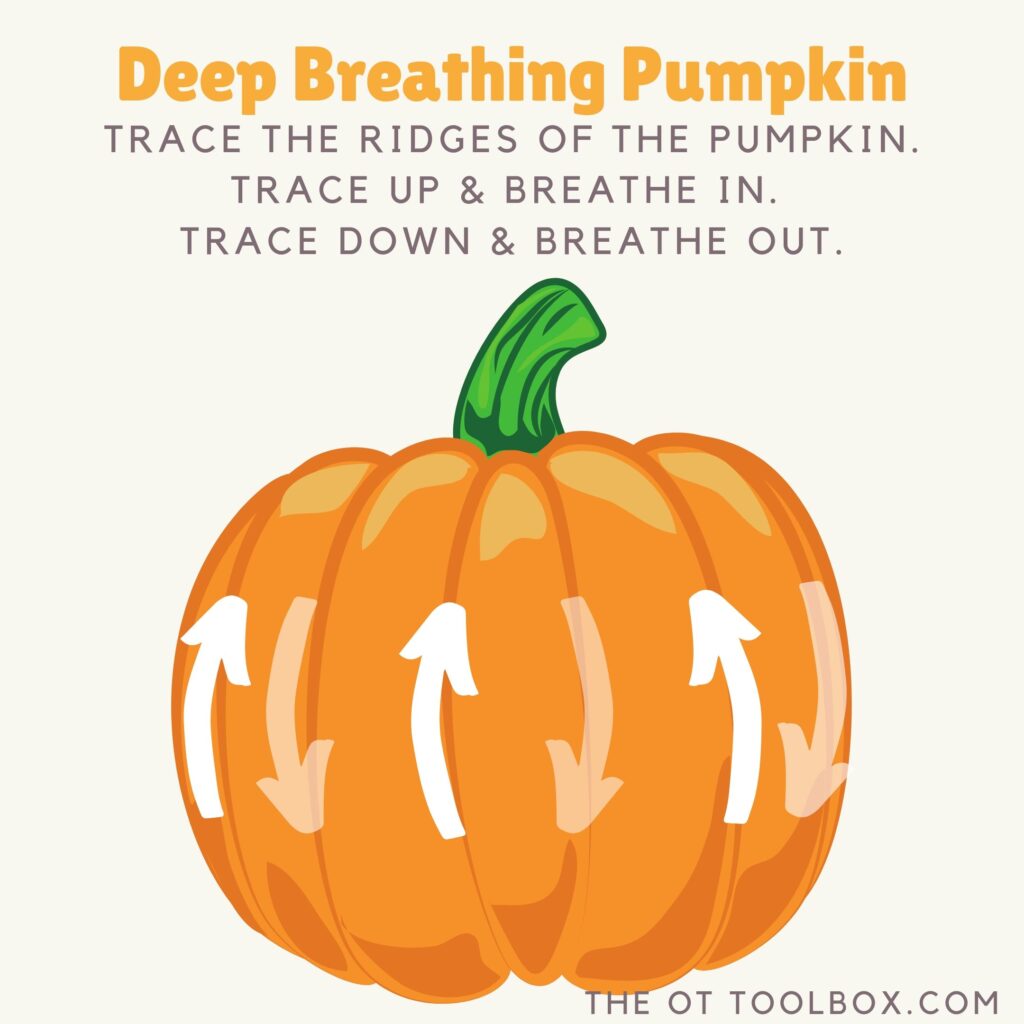
This printable Halloween mindfulness activity supports coping needs.
Free Pumpkin Deep Breathing Exercise
Want to get this free Pumpkin breathing exercise in both a color Poster format AND a coloring page? You’ve got it! Just enter your email address into the form below to access both printable pages.
This resource is also inside our Member’s Club. Members can log into their accounts and download the file directly without the need to enter an email address. The printable pages are located on our Pumpkin Therapy Theme page and our Mindfulness Toolbox.
Not a member of the Member’s Club yet? JOIN US HERE.
Grab the Pumpkin Fine Motor Kit for more coloring, cutting, and eye-hand coordination activities with a Pumpkin theme! It includes:
- 7 digital products that can be used any time of year- has a “pumpkins” theme
- 5 pumpkin scissor skills cutting strips
- Pumpkin scissor skills shapes- use in sensory bins, math, sorting, pattern activities
- 2 pumpkin visual perception mazes with writing activity
- Pumpkin “I Spy” sheet – color in the outline shapes to build pencil control and fine motor strength
- Pumpkin Lacing cards – print, color, and hole punch to build bilateral coordination skills
- 2 Pumpkin theme handwriting pages – single and double rule bold lined paper for handwriting practice
Work on underlying fine motor and visual motor integration skills so you can help students excel in handwriting, learning, and motor skill development.
You can grab this Pumpkin Fine Motor kit for just $6!
Halloween Mindfulness Activities
Use this printable pumpkin deep breathing exercise as a Halloween mindfulness activity. Other printable Halloween mindfulness activities include:
- Ghost deep breathing exercise (printable PDF)
- Halloween hand breathing exercise (see below)
Halloween Hand Breathing Technique
We also have a new deep breathing exercise for the Fall or Halloween season. If using a printable to achieve Halloween coping skills isn’t ideal (sometimes you don’t have the printable version with you…or for some kids it might be hard for them to picture a pumpkin as they are coping with some self-regulation needs…), then having another tool in your toolbox is a must.
We’ve come up with a Halloween Hand Breathing Technique to fit the bill!
All you need is your hands and fingers to using this hand tracing breathing strategy.
We talk a bit about using the Hand Breathing Technique for a self-reset to address coping skills, mindset, offset worries or anxiety, and as a deep breathing strategy.
Check out our video over on YouTube, or you can see it below. If you can’t view the video due to blockers on your computer or device, check out our Pumpkin Hand Breathing Technique over on YouTube.
To complete the Halloween Hand breathing technique, you can use the same pumpkin deep breathing strategy, but trace a pumpkin on the palm of your hand. We also included a pumpkin tracing task to create a motor plan for the pumpkin shape that is incorporated with deep breaths in and out.
Have fun!

Colleen Beck, OTR/L has been an occupational therapist since 2000, working in school-based, hand therapy, outpatient peds, EI, and SNF. Colleen created The OT Toolbox to inspire therapists, teachers, and parents with easy and fun tools to help children thrive. Read her story about going from an OT making $3/hour (after paying for kids’ childcare) to a full-time OT resource creator for millions of readers. Want to collaborate? Send an email to contact@theottoolbox.com.

